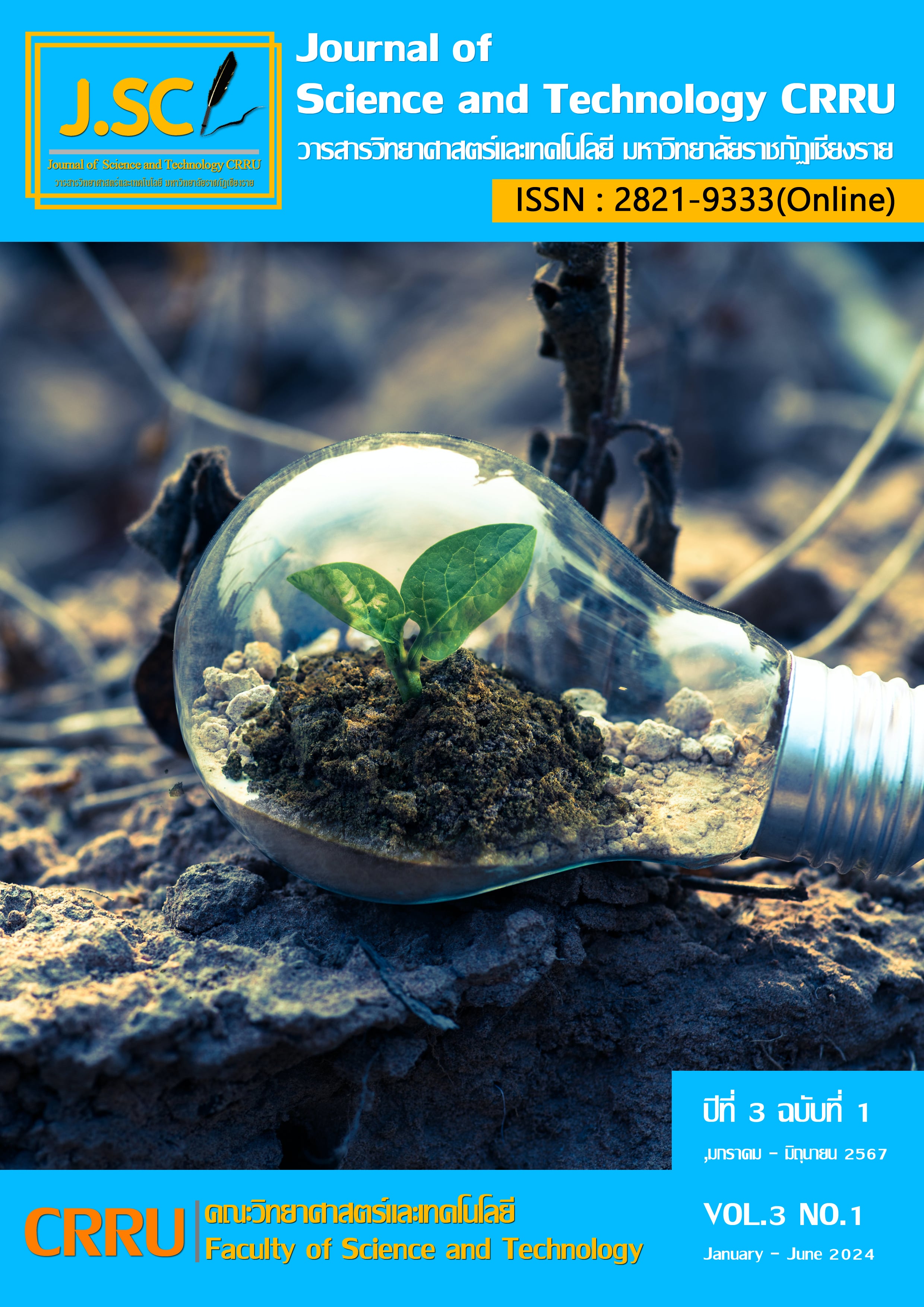Process Development for Crispy Rice Cake from Glutinous Rice Flour
Main Article Content
Abstract
The purposes of this research were to study the process of producing crispy rice cakes using traditional methods, study the suitable conditions of producing for use with glutinous rice flour raw material and easily available equipment.
The results of the study found that big wood mortar was important equipment for making crispy rice cake by traditional method. Hot steamed glutinous rice was pounded into dough, before being rolled into a round shape, drying rice dough sheet by sunlight and made crispy by grilling. The suitable conditions to produced rice dough sheets found that suitable temperature to replace using sunlight is 60ºC for 1 hour while the appropriate thickness of rice dough sheets is 14 g/100 cm2. Development of crispy rice cake production process there are steps as follows: mixing all the ingredient together (glutinous rice flour, water, brown sugar and salt), steaming until the dough is cooked for 30 minutes, kneading cooked dough for 30 minutes, rolling the dough into sheets with a thickness 14 g/cm2, drying dough sheets in hot air oven at 60ºC for 1 hour, cutting dough sheets into shapes and baking until crispy by convection oven at 200ºC for 5 minutes.
The sensory attribute acceptance of developed process recipe and traditional recipe were similar for the best taste and aroma. The products were accepted at level of high to very high preference. Texture and overall acceptance of the developed process were accepted at level of moderate to high preference. While the traditional recipe was accepted at level of high to very high preference for every characteristic. Moisture content and water activity of traditional recipe was higher than developed process recipe.
Article Details

This work is licensed under a Creative Commons Attribution-NonCommercial-NoDerivatives 4.0 International License.
Journal of TCI is licensed under a Creative Commons Attribution-NonCommercial-NoDerivatives 4.0 International (CC BY-NC-ND 4.0)
References
อรอนงค์ นัยวิกุล. (2550). ข้าววิทยาศาสตร์และเทคโนโลยี. พิมพ์ครั้งที่ 2. กรุงเทพฯ : มหาวิทยาลัยเกษตรศาสตร์.
วรรณศิกา ช่วยพัฒน์, ดุสิต อธินุวัฒน์, ดวงกมล ด่านขับต้อน และชนัญ ผลประไพ. (2560). การพัฒนาผลิตภัณฑ์ข้าวพองจากข้าวเหนียวเขี้ยวงูอินทรีย์. Thai Journal of Science and Technology, 9(3), 397-406.
อนงค์ สมประสงค์. ผู้ประกอบการชุมชน. (10 พฤศจิกายน 2563). สัมภาษณ์.
วิชมณี ยืนยงพุทธกาล และพรนภา น้อยพันธ์. (2553). วิธีการเตรียมขั้นต้นที่เหมาะสมสำหรับการผลิตมันเทศพองกรอบ. รายงานการประชุมวิชาการสถาบันอุดมศึกษาทั่วประเทศประจำปี 2553, 1(1), 374-377.
เพลินใจ ตั้งคณะกุล. (2546). การทำข้าวเกรียบเป็นผลิตภัณฑ์คุณภาพ. วารสารอาหาร, 33(2), 90-93.
จิรรัชต์ กันทะชู้ และคณะ. (2560) “ลักษณะคุณภาพของผลิตภัณฑ์ข้าวเกรียบว่าวที่ทำจากข้าวเหนียวพันธุ์ที่เพาะปลูกในจังหวัดน่าน”. รายงานการประชุมวิชาการมหาวิทยาลัยเทคโนโลยีราชมงคล ครั้งที่ 9, 1(1), 10-17.
กล้าณรงค์ ศรีรอต และเกื้อกูล ปิยะจอมขวัญ. (2550). เทคโนโลยีของแป้ง. พิมพ์ครั้งที่ 4. กรุงเทพฯ : มหาวิทยาลัยธรรมศาสตร์.
สำนักงานมาตรฐานผลิตภัณฑ์อุตสาหกรรม. (2549). มาตรฐานผลิตภัณฑ์ชุมชน : ข้าวเกรียบว่าว.


